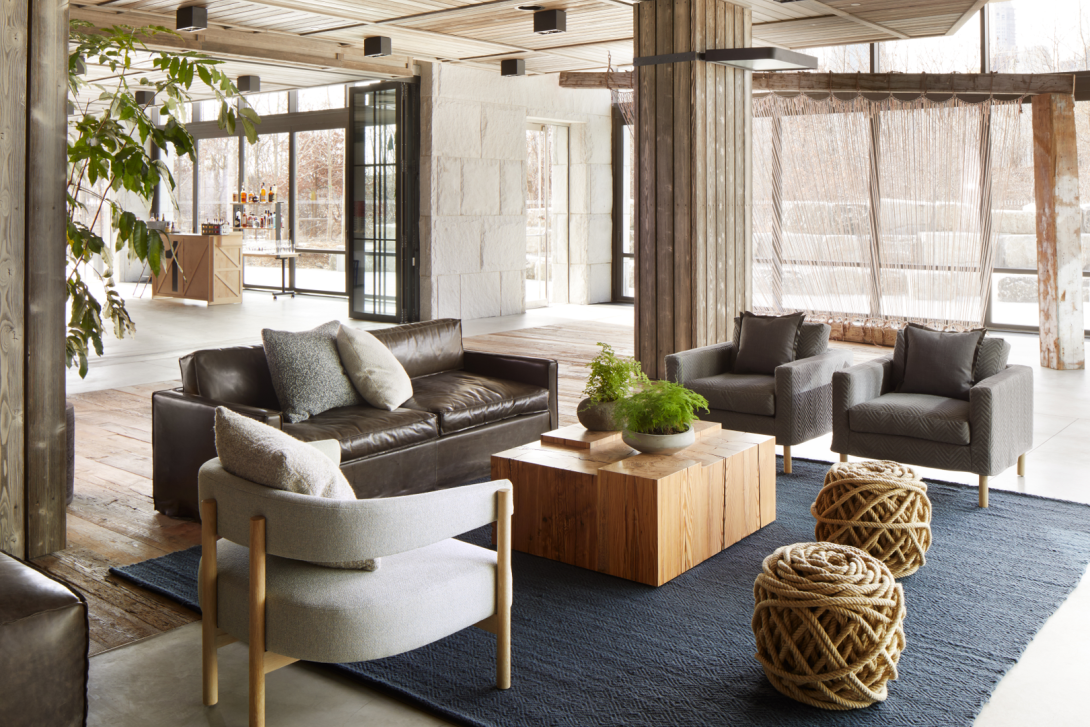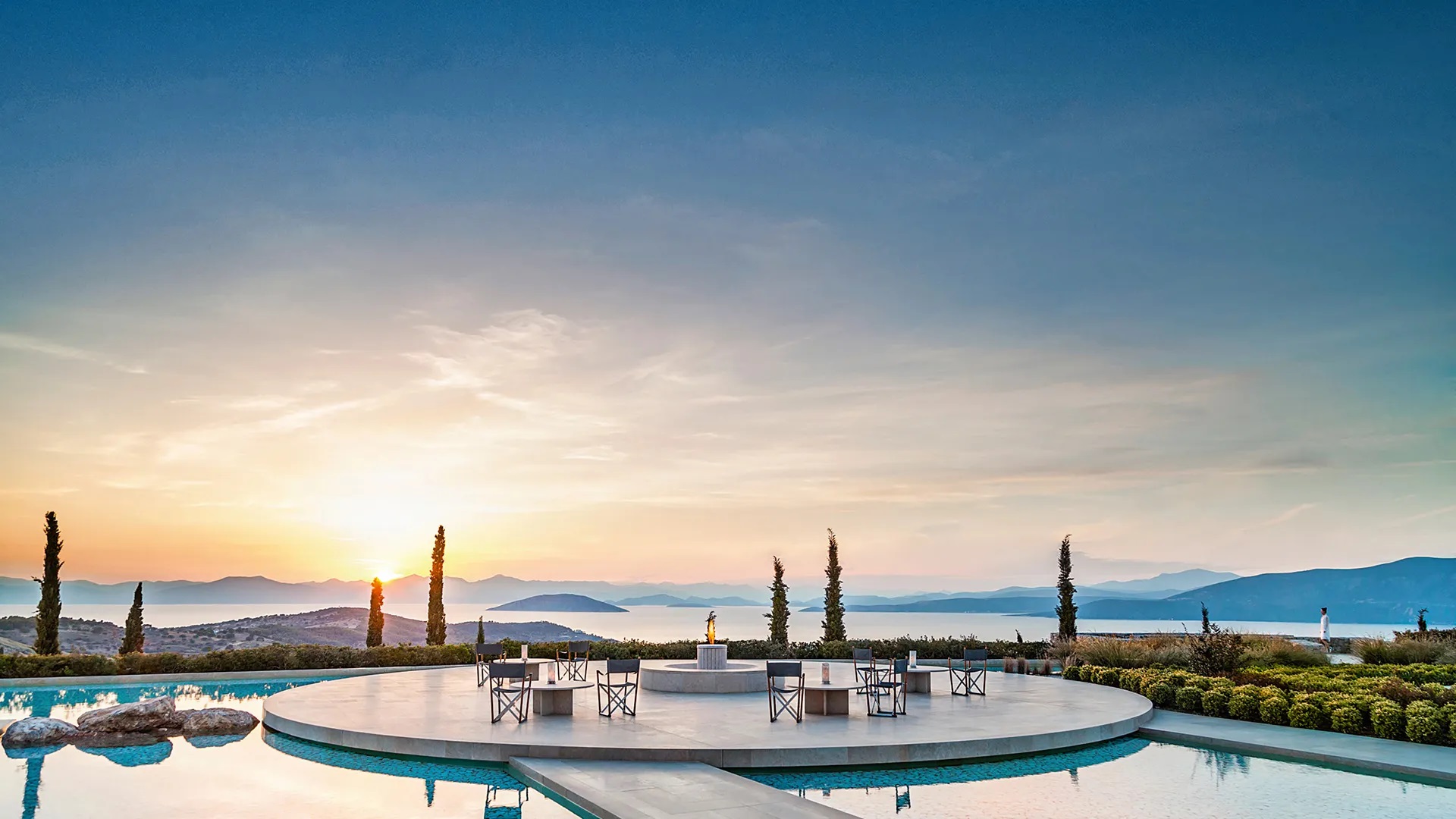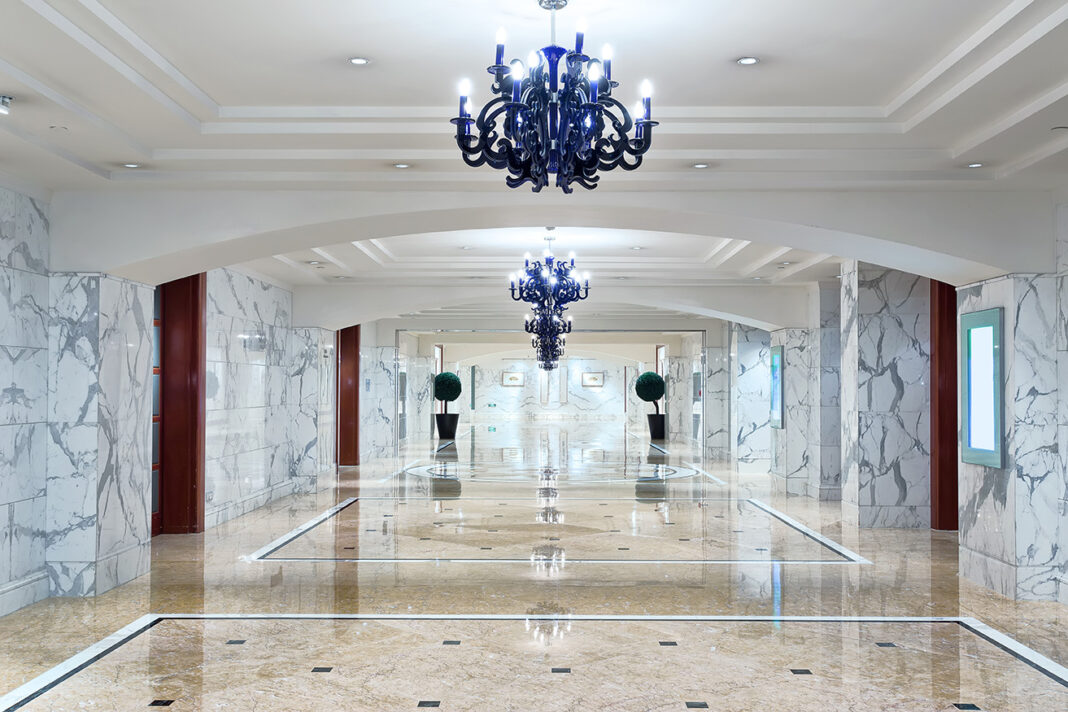Every detail matters in the highest echelons of hospitality — and that includes what’s beneath your feet. Luxury hotels are increasingly using innovative flooring solutions to create unforgettable guest experiences, transforming the ground we walk on into an integral part of the overall design narrative.
We worked with Designer-Carpet.co.uk to highlight the latest trends as hotels strive to create memorable, Instagram-worthy spaces.
Biophilic design
One of the most striking trends in recent years is the rise of biophilic design. Hotels are bringing the outdoors in with nature-inspired flooring that mimics natural elements.
The Fairmont Maldives Sirru Fen Fushi takes this concept to its logical extreme, incorporating actual sand floors in some areas to seamlessly blend indoor and outdoor spaces.
Elsewhere, we’re seeing wood-look porcelain tiles that convincingly mimic exotic hardwoods, and stone-effect floors that replicate riverbed pebbles or beach sand. Carpets, too, are getting the nature treatment, with organic patterns inspired by forest floors or coral reefs.

Natural and sustainable materials
Sustainability is no longer a niche concern but a central tenet of luxury design.
The 1 Hotel Brooklyn Bridge exemplifies this trend, using reclaimed wood from local buildings throughout its design, including its striking floor spaces. Bamboo and cork flooring are gaining popularity for their sustainable credentials combined with a luxurious feel.
Wool carpets, prized for their natural beauty and durability, are also making a comeback in high-end establishments.
Geometrics
While natural looks are in vogue, so too are bold statements. Geometric patterns are making a big impact on luxury hotel design.
The NoMad London hotel showcases this trend beautifully with its stunning custom-designed geometric carpets and intricate tile work. Lobbies and bathrooms feature complex mosaic designs, while ballrooms and conference areas sport large-scale patterns that catch the eye and define the space.
Smart flooring
Technology is also finding its way underfoot. While not yet widespread, smart floors are beginning to appear in forward-thinking establishments. The TWA Hotel at JFK Airport, for instance, features LED-embedded flooring in its event spaces, creating customizable lighting effects that transform the atmosphere at the touch of a button.
We’re also seeing the emergence of interactive floors that respond to guest movements and self-cleaning surfaces that enhance hygiene – a consideration that has taken on new importance in recent years.

Outdoors, indoors
In-resort design, creating a seamless transition between indoor and outdoor spaces is crucial.
The Amanzoe resort in Greece achieves this masterfully, using continuous limestone flooring to blur the lines between inside and outside. Large-format tiles that extend from interior spaces to pool decks are becoming increasingly popular, as are weather-resistant materials that can withstand both indoor and outdoor conditions.
Handcrafted elements
Finally, there’s a growing appreciation for artisanal and handcrafted touches in luxury hotel flooring.
The Fife Arms in Scotland exemplifies this trend with its bespoke carpets designed by artist Zhang Enli, effectively turning the floors into works of art. Hand-painted tile floors, often depicting local scenes or telling a story unique to the hotel’s location, add character and a sense of place.
Some ultra-luxury establishments are even incorporating precious materials like mother-of-pearl or semi-precious stones into their floor designs, creating truly one-of-a-kind surfaces.





